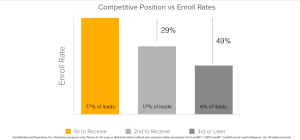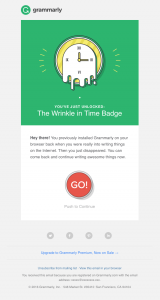The online customer purchase path has become way more complex. If marketers want to develop a relevant and efficient online acquisition strategy, they have to fully understand this new online purchasing landscape.
The online advertising world is traditionally “ad centric” – campaign performance is measured for a given format and on a specific channel. Now, it’s evolving into a “customer-centric” model, where performance is measured and analyzed at the user level (i.e., its overall acquisition cost, regardless of the channel or formats being used). The move from a silo to a cross-channel vision allows advertisers to allocate ad investments more wisely, avoiding excessive spend on a single user. If you’re a marketer who’s willing to create a unified strategy for your ad campaigns – across Search, Social, and Display channels – then audience targeting and use of first-party data are vital necessities.
The Audience Is the Glue and Cement Between Channels
Did you know that 98% of website visitors don’t convert on their first visit? To send them back to your website and directly to the bottom of the celebrated conversion funnel, you have to retarget them one way or another. This is especially important for marketers who:
- Invest heavily to acquire high levels of web traffic
- Want to ensure the right use of their website across diverse channels
- Are trying to take strategic advantage of these channels – whether it’s Search (Google AdWords, Bing, Yahoo Gemini), Social (Facebook, Twitter, LinkedIn), or Display (network and banner publishers, video)
Because of the obvious link between search intent and the related click action, until recently, no channel was able to compete with Search. However, this is changing, due to technologies that focus on audiences and are able to leverage substantial volumes of data.
Now, advertisers no longer rely solely on what customers are searching for (queried keywords). They’re also leveraging multiple behavioral and demographic data from other channels. The marketers’ goal is to identify, segment, target, and retarget the audience with the highest customer lifetime value, across different channels and devices (smartphones, tablets, and desktop) in order to maximize conversion rates.
Leverage Customer Intent and Behavioral Signals – Building First-Party Data
Your website is still the best source of information on user behavior, since you can easily analyze browsing patterns (number of page views, shares on social media, cart abandon, etc.).
This information allows you to identify trends and define various profiles according to your performance goals. For example, a user who’s seen 10 different pages has a tendency to convert more frequently than someone who’s seen only one.
You can enrich these website profiles with other data (internal or external to the site) in order to build powerful data combinations. Two types of data that always seem to be inescapable: intent (via search engine) and demographic.
Combining the windfall of useful information from search campaigns with demographic targeting insights from social campaigns, you can refine your user profiles for more optimized retargeting campaigns.
By cross-checking this audience data, you can better understand your prospective customers while improving the efficiency of your online campaigns. And, you can more precisely target your most important user segments. Indeed, these audience lists can be used across your three ad campaign types:
- Search – Google Remarketing Lists for Search Ads (RLSA)
- Social – Facebook Website Custom Audiences (WCA) and Twitter Tailored Audiences
- Display – ad exchange platforms (programmatic), Facebook AdExchanger, and Google AdExchanger
To provide a real-world example: Someone starts his purchase journey on a search engine with the term “cheap hotel in London”. Then, he clicks the text ad without converting. You could add him to the audience list that includes people interested in the “London” destination with an intent of “cheap”. You can then implement a targeting campaign for this list by bidding differently on each channel to optimize its cost of acquisition (for instance, Search at -20%, Social at +20%, and Display at +10%).
Improved Campaign Performance, Unified Management
Looking at the customer purchase path, it’s obvious that each channel has drastically different roles and impacts on final outcomes. For example, Search is more likely to generate direct sales, while Social and Display have more supporting roles. According to a Marin Software study, Search campaigns – when jointly managed with Social – generate 26% higher revenue per click compared to single-channel campaigns. This type of unified management strategy also improves revenue per conversion – Search campaign revenue per conversion was 68% higher when managed simultaneously with Social.
Marketers who successfully leverage unified Search, Social, and Display strategies experience better managed and optimized online acquisition spend. By firmly shifting focus to your audience, you can maximize lifetime value and overall ROI. Using a flexible and transparent platform that enables you to precisely segment and target users on all channels allows you to more effectively achieve your business goals, while evolving away from a single-channel approach.
(124)






